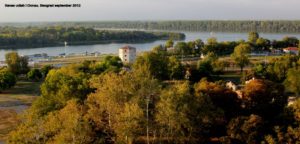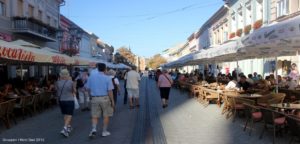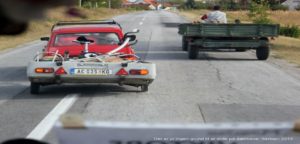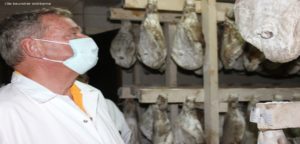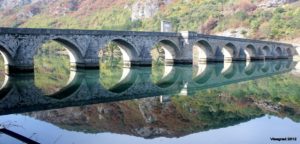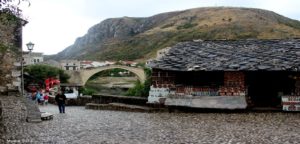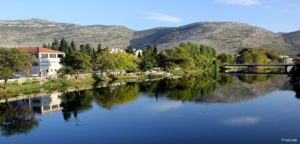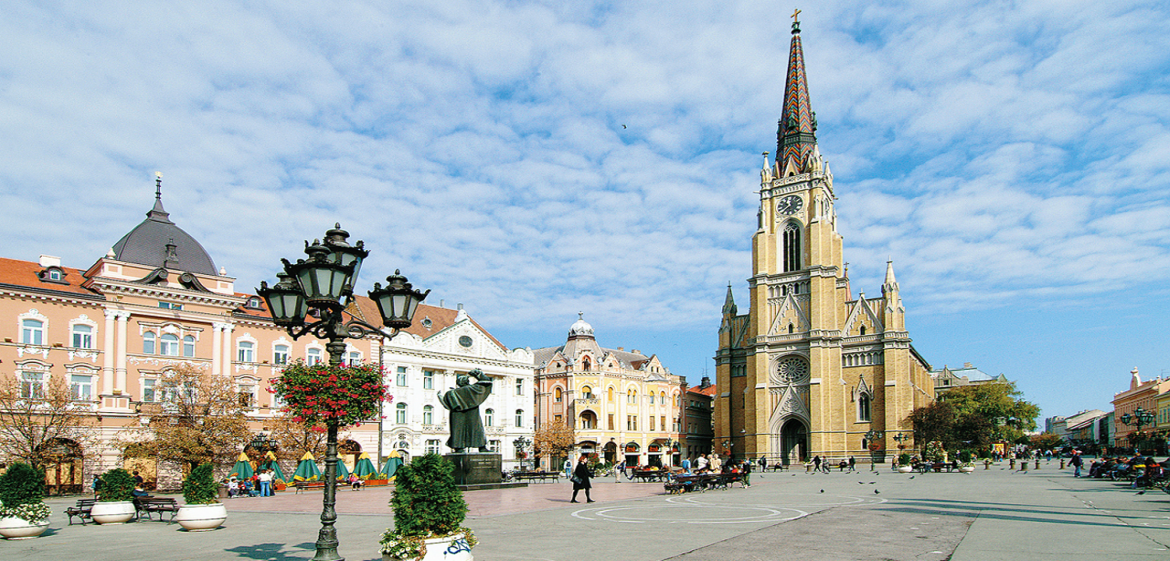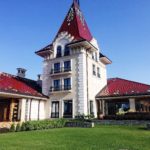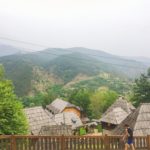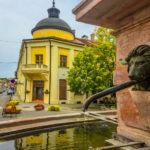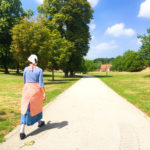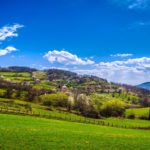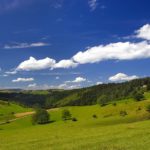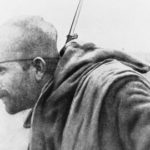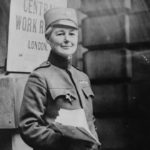TOUR THE BALKANS
16 days, 6 countries, monuments under the protection of UNESCO, breathtaking landscapes, open-hearted people with a wide smile, food for all senses – reveal the Balkans in all of its beauties and controversies. This journey enabled us to perceive the latest conflicts in this turbulent area from different perspectives of the people who had been on opposite sides. Our guests from Denmark returned home with ten new stamps in their passports.
Balkan Tour
through Serbia, Bosnia-Herzegovina, Croatia, Montenegro, Albania, and Macedonia
BELGRADE
We started our Balkan Tour at “Nikola Tesla” Airport in Belgrade, where we welcomed the guests from Denmark. Belgrade is with reason called “the gateway to the Balkans”. Since we had only two days to get to know the Serbian capital, we focused on the top sights in Belgrade that one must visit: Belgrade Fortress, Knez Mihajlova Street, Orthodox Cathedral, Residence of Princess Ljubica, Temple of St Sava, House of Flowers, etc. We were going through the dense traffic by bus and strolling through the narrow streets of the old Belgrade; we went window-shopping of the famous designer labels, while, at the green market, we were bargaining over the price of fresh plums. Arrival to Serbia implied handling a new currency – we were going to change six of them during our journey. The stay in Belgrade was enriched with the dinner in Skadarlija, the bohemian quarter, in one of the traditional restaurants with excellent food, local wines and live music – just a hint to the guests of things to come.
NOVI SAD
Our journey took us shortly to the north, to the second-largest city in Serbia. It is difficult to compare these two cities, for they are completely different. The multinational spirit of Novi Sad can be felt on every corner: in the presence of the shrines of different religions, multilingual inscriptions on the institutions, while on a table Serbian, Hungarian, Slovak specialties served. We also visited the Fortress of Petrovaradin, the second-largest fortification in Europe; we climbed its top to enjoy the view of Novi Sad, and then went to the bowels of the fortress, in the underground, to discover the secrets of Petrovaradin. From there, we went to Sremski Karlovci, a town-museum. The walk in the town center ended in one of the local wineries. We had the opportunity to taste the local wines, especially Bermet, the dessert wine that used to be served on the famous Titanic. Red-faced, but happy, we returned to Belgrade to rest and prepare for the next stage of our journey.
CENTRAL SERBIA
We headed towards the south. The landscape changes completely. The Pannonian plain gives way to the hills of Sumadija. In two days we visited the Royal Mausoleum in Topola and the two most significant medieval monasteries in this part of the country: Zica and Studenica that is under the protection of UNESCO. We were accommodated in Vrnjacka Banja, the most famous Serbian spa. The guests used the opportunity to enjoy the benefits of its thermal mineral water. However, they had one objection: they could not eat everything that the hosts served to us in the restaurants! In one family restaurant, granny was in charge of baking bread the old-fashioned way. The guests asked to take some bread with them regardless of their price. Our hosts did not let us pay, but instead packed it so that we had it while traveling. It was like a cake!
WESTERN SERBIA
The last two days in Serbia we spent in the west of the country. The landscape is already mountainous. We passed through the biggest gorge in Serbia between the mountains Ovcar and Kablar. That was just a stop on our way to one of the most beautiful Serbian mountains – Zlatibor, the place where one breathes deeply. The plateau of Zlatibor is an area where the currents from the Mediterranean and the north meet and, therefore, it has always been considered an air-spa. It is famous for its smoked specialties, especially the ham that we had an opportunity to taste at one of the local producers. A visit to Sirogojno, the only open-air museum in Serbia, is a must while staying on Zlatibor. It represents the former way of life in mountainous villages. Nevertheless, the strongest impression was the ride on “Sargan Eight” – one of the best scenic routes by train in Europe. The weather was nice, so we completely enjoyed the ride. We only regretted not having had more free time to stroll the glades of Zlatibor. We had to move on.
BOSNIA-HERZEGOVINA
The first destination was the town of Višegrad and one of the most significant monuments in Bosnia-Herzegovina – the bridge of Sokollu Mehmed Pasha from the 16th century – an exceptional example of the Ottoman architecture and one of three monuments under UNESCO protection in this country. The bridge had been an inspiration to one of the most significant Yugoslav writers Ivo Andric, who won the Nobel prize for the novel “The Bridge on the Drina”. After crossing the bridge, we made a coffee break next to the river with a view of the bridge. We also visited “Andrićgrad” (The Town of Andric), a monument to multiculturalism in Bosnia-Herzegovina, the creation of one of the most significant film directors from this region, Emir Kusturica.
The road took us next to Sarajevo – the capital of Bosnia-Herzegovina. We were accommodated in a hotel in the very town center. The city center looks as if it just came from “One Thousand and One Nights” – the Orient in the middle of Europe. We got to know the city, its history and top sights and, of course, we tried “Sarajevo kebabs”, one of the local specialties. The traces of the latest conflicts are still visible in Sarajevo; therefore, the war from the 1990s was an inevitable subject. The Balkan Tour enabled our guests to perceive the conflict from different perspectives listening to the people who were on opposite sides during the war. There was free time to wander through the streets of Sarajevo and to go shopping.
From Sarajevo, we headed towards the south. The landscapes of the Neretva valley are so beautiful that our guests asked us to make regular stops to take photos. At the entrance to Mostar, we were caught by a terrible shower. It rained so heavily that the entire traffic was blocked for ten minutes. And just as we thought that we would not be able to visit the town, the rain stopped and Mostar appeared in all of its beauty. Although the streets were slippery from the rain, we enjoyed walking in the old part of the town, especially visiting the Old Bridge, another monument under the protection of UNESCO. After a short break for souvenir shopping, we continued our journey. We arrived in sunbathed Trebinje. After a short walk in the town center, we sat in the shade of one-hundred-year-old plane trees to have a cup of coffee before we depart to Dubrovnik. Another border crossing; another currency to master.
DUBROVNIK (CROATIA)
And, finally, the sea! We reached the pearl of the eastern Adriatic – a top tourist destination in Croatia. Dubrovnik is a town of the fascinating history, that managed to preserve its medieval appearance despite numerous calamities, both natural and the ones provoked by man. Medieval citizens of Dubrovnik transformed diplomacy into the art. We accommodated in a very nice hotel at the seaside, refreshed over dinner and impatiently expected the next day. The sightseeing of Dubrovnik was an unforgettable experience due to the nice weather and despite the large crowd. There were tourists from all over the world. We visited the Franciscan Monastery with one of the oldest pharmacies in Europe, Rector’s Palace, Orthodox Church, etc. In the afternoon, the guests had the opportunity to explore the town on their own walking along the town walls or climbing the hill above the town by cable car. The memorable view of Dubrovnik stretches from it. In the evening, we enjoyed the sea specialties, thanks to which our stomachs could finally rest from strong food abundant in calories that we had had in the interior.
MONTENEGRO – Wild beauty
We were still on the Adriatic, only we went further to the south – to Montenegro. We made the first stop as soon as we crossed the border in Herceg Novi. It is situated at a remarkable place, at the entrance to the Gulf of Kotor. The purpose of the town was actually to protect it. After a short sightseeing of the 14th-century fortress, we continued our ride along the gulf. The road is passing next to the sea through a line of small, picturesque, coastal settlements. Of course, we made several photo-stops, because beauty like this cannot be unrecorded. We arrived in Kotor, formerly the center of the trade in this part of the Balkans and a great rival of Dubrovnik. Nowadays, both rivals are under the protection of UNESCO. Kotor’s defense walls, that are 4.5 km (2.8 mi) long, as well as the city’s Upper and Lower Town with mighty Lovcen Mt at the back, make a strong impression on everyone. At the request of the guests, we went to the local green market to supply ourselves with fresh fruit.
We departed to Budva, the tourist capital of Montenegro. The beginnings of Budva are related to ancient times and, therefore, its old town is an inevitable tourist attraction. After dinner, during which we among others enjoyed excellent Montenegro wines, we went to a well-deserved rest. The next day brought us new excitement. We went to the mountains. The aim was Cetinje, the old capital of Montenegro. Although small in size, modest, almost ascetic, without large and luxurious palaces, it best reflects the spirit of this small, but proud and warlike Balkan nation. Cetinje was also a spiritual center of Montenegro. The road took us from Cetinje to the top of the Lovcen Mt, to the mausoleum of the central figure of the Montenegro history – Petar II Petrovic Njegos. The mausoleum is located 1,657 m (5,136 ft.) above sea level. The last section of the path leading to the top is composed of 460 stars on the very ridge. I admit that due to the fear of height I had troubles climbing up. But, it was worth it. The view from the top of the Lovcen Mt is priceless and it cannot be described in words. It has to be experienced in person. I would probably stay on the top if it had not been for my guests. They were holding my hands and encouraging me down. Free afternoon in Budva some of them spent walking, while others went swimming in the sea!
ALBANIA
Albania was our next destination. It is probably the least known European country considering its almost complete isolation until the beginning of the 1990s. One more border to cross and a new currency to handle. The first stop was the town of Shkodra, the center of northern Albania. We visited the exceptional sight from the Middle Ages – Rozafa Fortress. We refreshed over lunch on the bank of the Drim River and that continued towards Tirana. It is difficult to find a place with so many Mercedes cars! The Albanian capital is also its biggest city and the center of the country in every aspect. It is more than a picturesque city considering the colorfulness of the façades. After interesting sightseeing and learning of its history, in the first place of the communist heritage still visible at every corner, we had dinner and overnight stay in a very nice hotel in the town center. From Tirana, we changed direction. We went eastwards to Macedonia. The landscape is still mountainous and breathtaking. After numerous photo-stops, we reached the border and now already familiar procedure: customs – police, police – customs. We entered FYROM.
OHRID (MACEDONIA)
We arrived in Ohrid, our final destination in this Balkan Tour. It is situated on the shore of the namesake lake, one of the deepest in Europe. The visit to Ohrid started with sightseeing to get to know its rich past that dates way back into the 3rd century BC. Since the end of the 9th century, Ohrid was both the center of expansion of Christianity among the South Slavic people and Slavic literacy. There are as many churches and monasteries in Ohrid and its vicinity as the days of a year – 365! It was also the seat of the ephemeral Slavic empire in the 10th century. After its collapse, Ohrid changed many rulers in its turbulent history, each of which shaped this place in their way. It was its cultural and natural heritage that brought it under the protection of UNESCO in 1979. After visiting the town, fortress, some of the most important churches as well as the workshop where the paper is still made the old-fashioned way without chemicals, glue or resin, we went for a boat ride. We ended the day in one of the local restaurants of Macedonian cuisine. At one moment we thought that the dinner would never end! The waiters kept on bringing one dish after the other. The atmosphere was additionally spiced up with live music. All in all – unforgettable!
The next day we went to the monastery of St Naum, built at the beginning of the 10th century. It is situated in an elevated position overlooking the lake on its eastern side. The spring of the Black Drim River is located in the vicinity of the monastery. It flows in the lake on the eastern side and flows out of it on the western side. For centuries people have been visiting this monastery in search of healing both physical and spiritual. It is believed that if one leaned head on the tombstone of St Naum, one could heat his heartbeat! The rest of the day we had free time, that our guests spent either walking, shopping, riding bicycles along the shore, as each of them pleased. We organized a farewell dinner at our hotel. It was very nice with traditional Macedonian music and dance. The next day we had to depart early because we had to take our guests to “Alexander the Great Airport” in Skopje. At 11:00 am we parted and went the separate ways – our guests to Denmark and we returned home to Novi Sad.
After more than two weeks, three capitals, six UNESCO heritage sites, the plain, tall mountains, the blue Adriatic, approximately 1,800 km (1,125 mi) and countless calories, it was time to say “Goodbye”. Our guests promised us that they would not forget this journey through the Balkans.
Balkan Tour was organized by “Magelan Travel” from Novi Sad and “Victors Farmour” from Denmark in 2012 and 2013 at the end of September and beginning of October.
